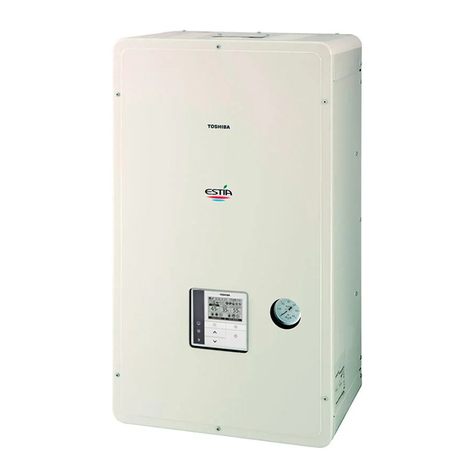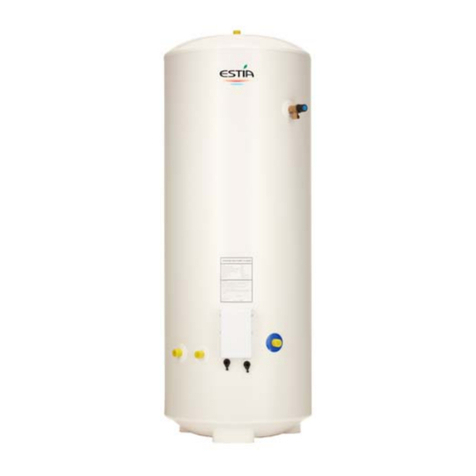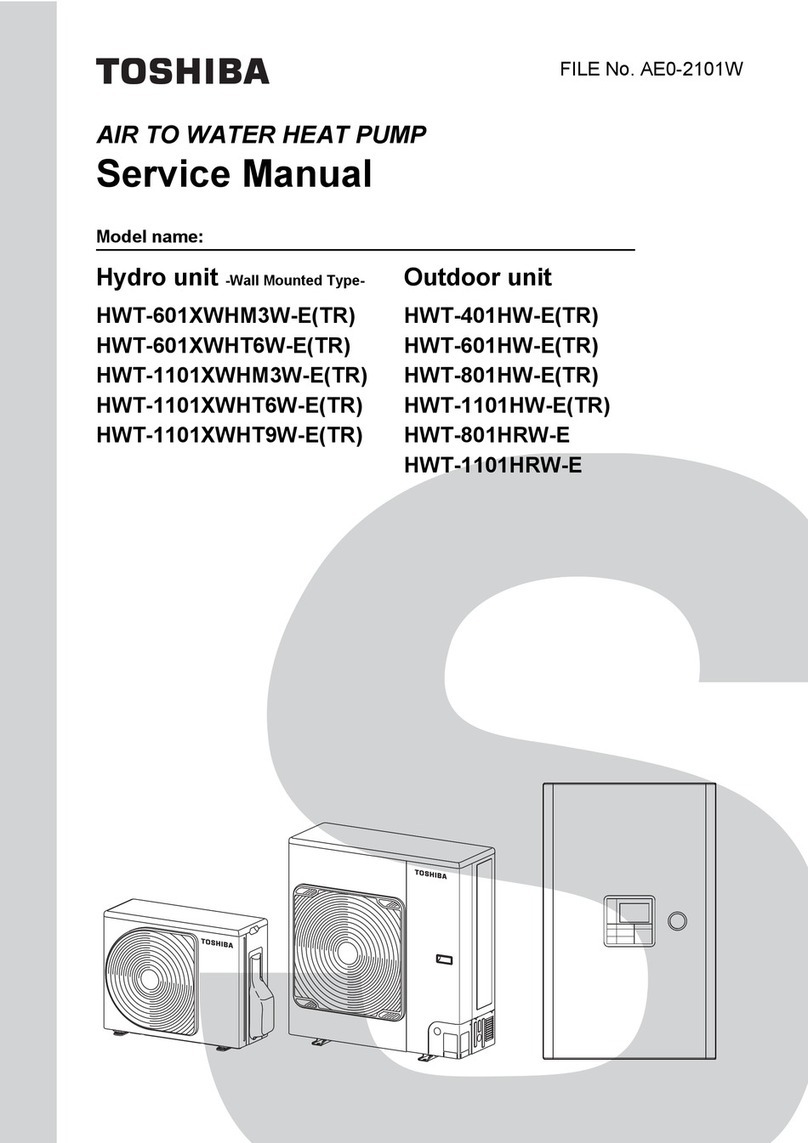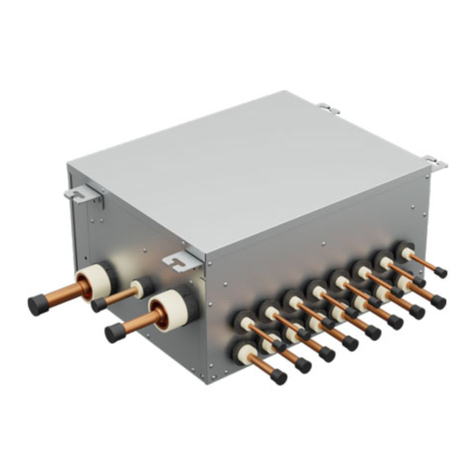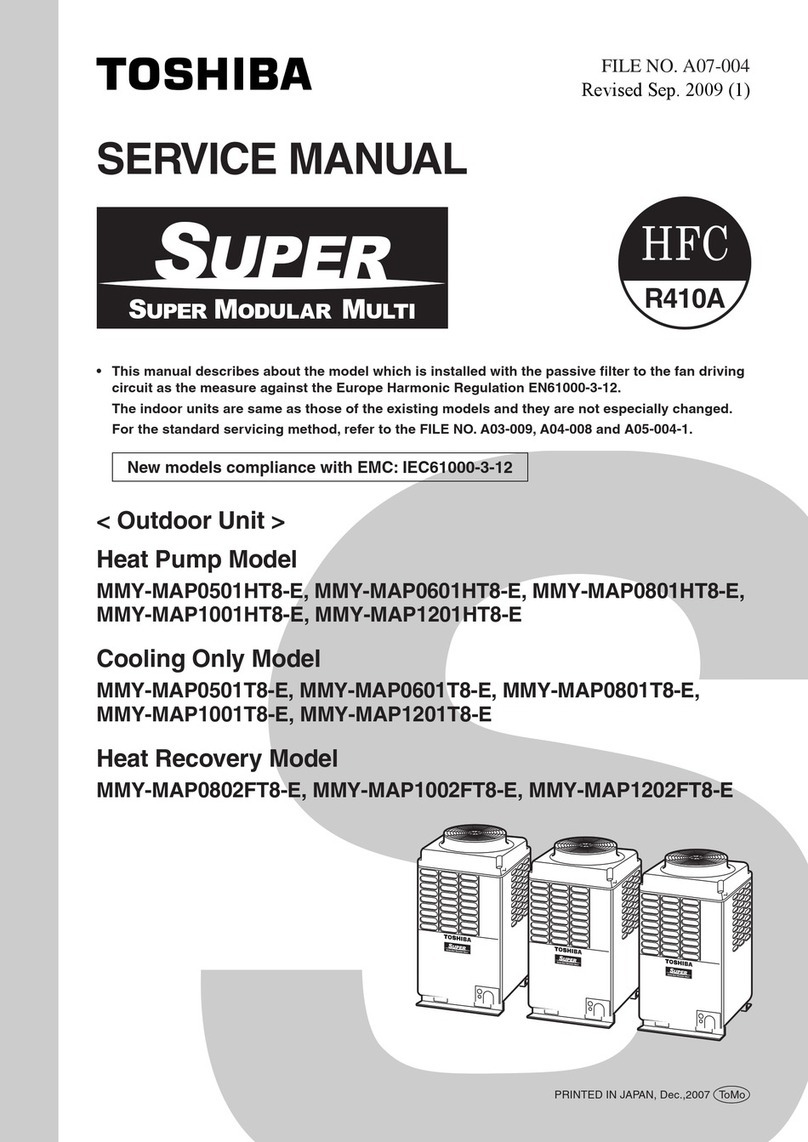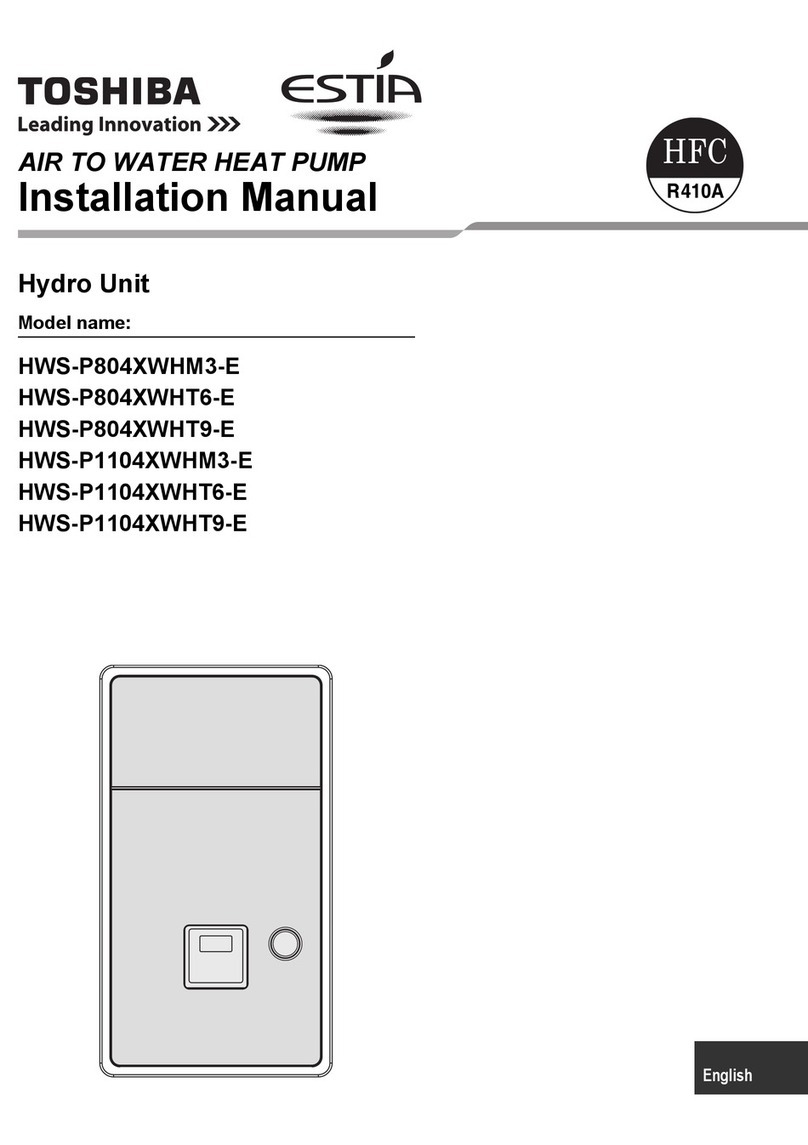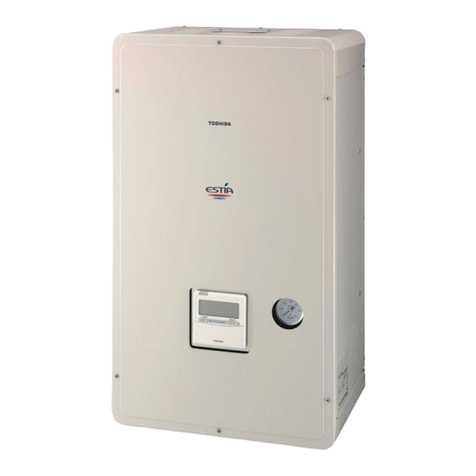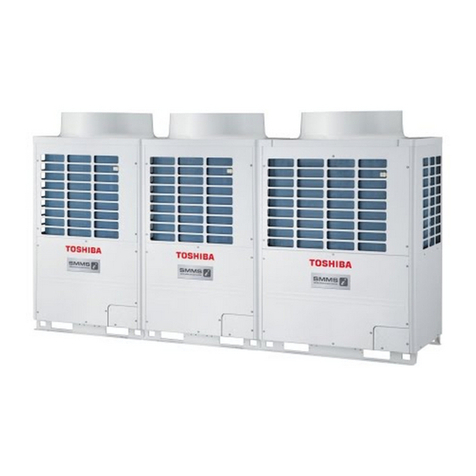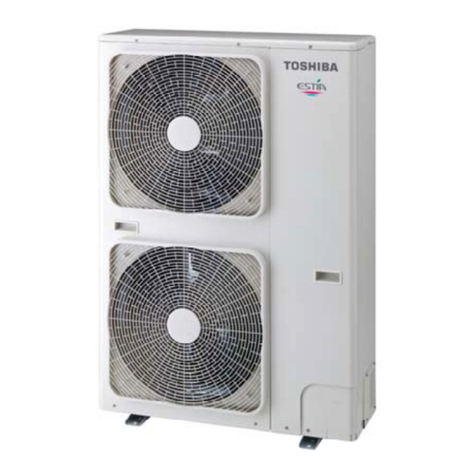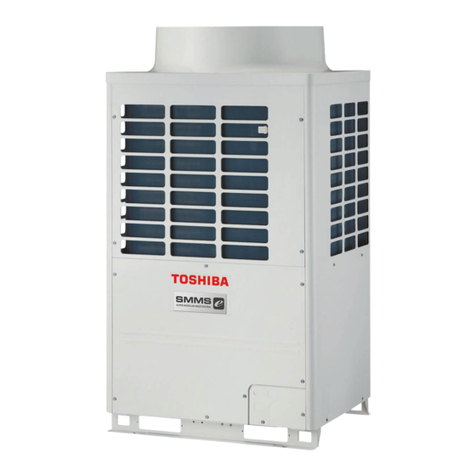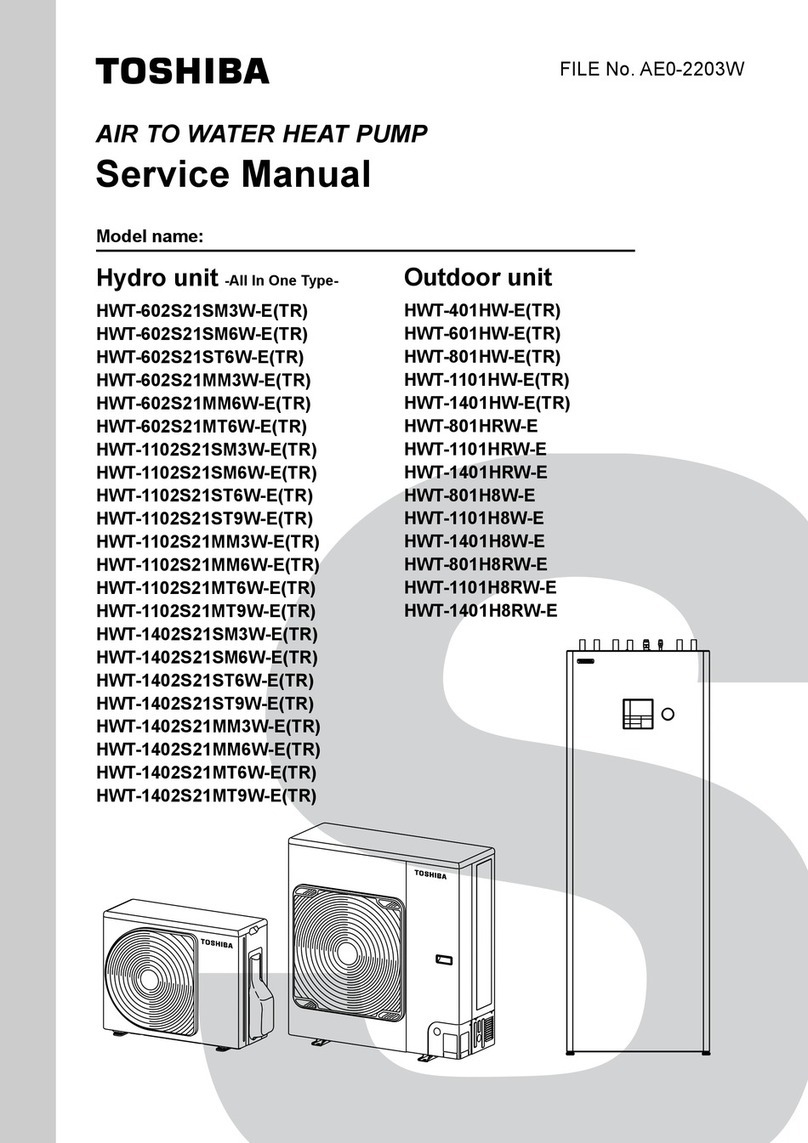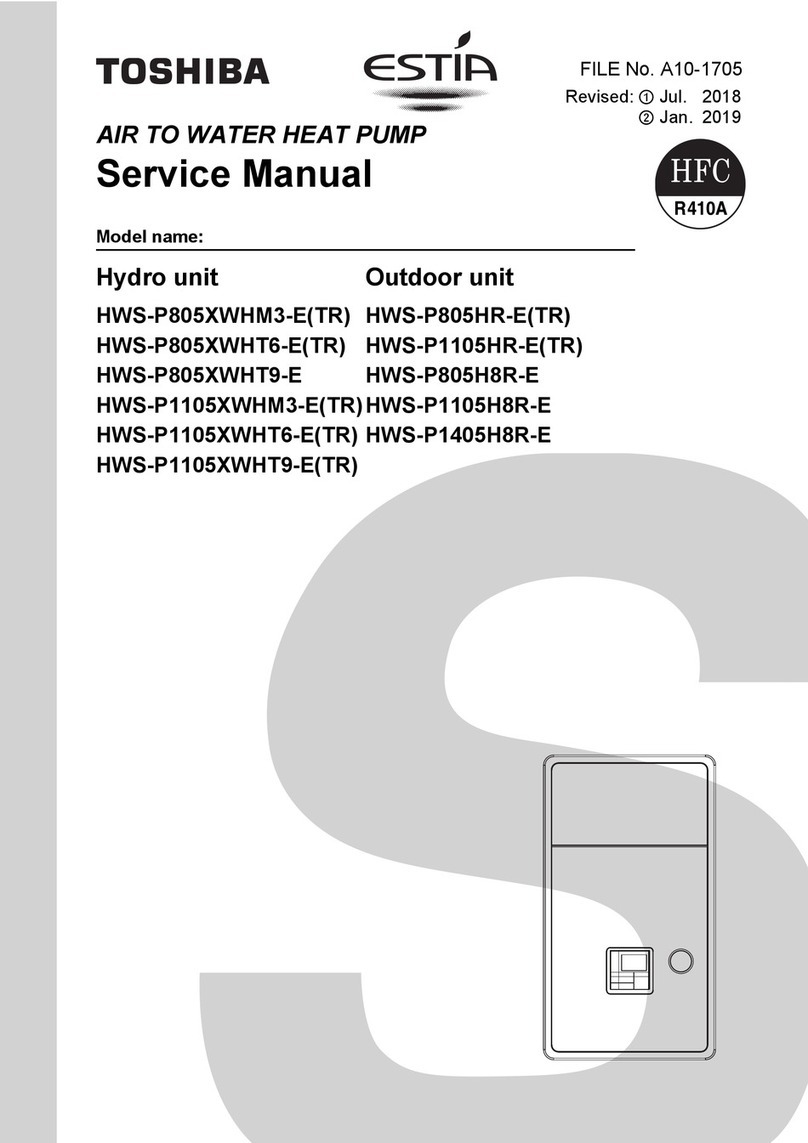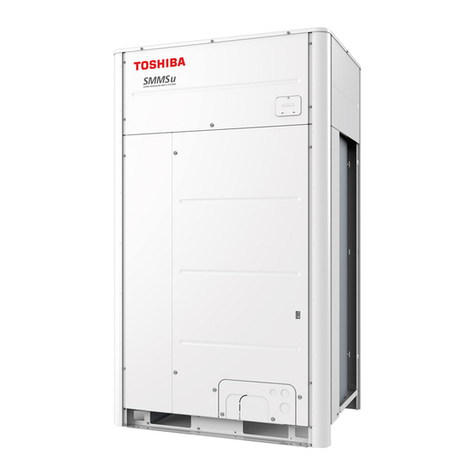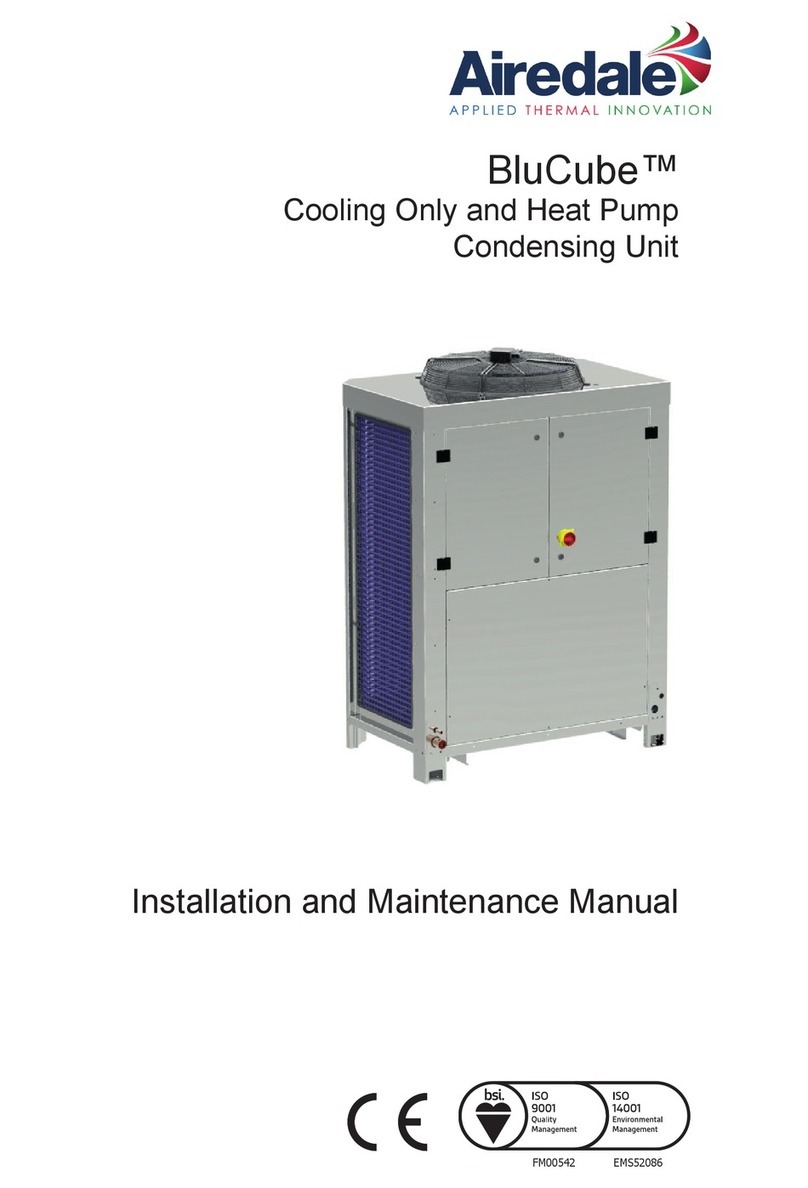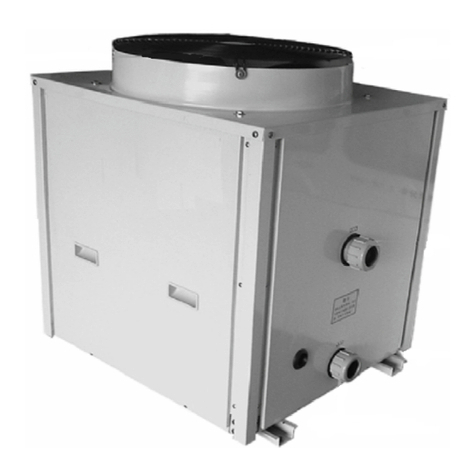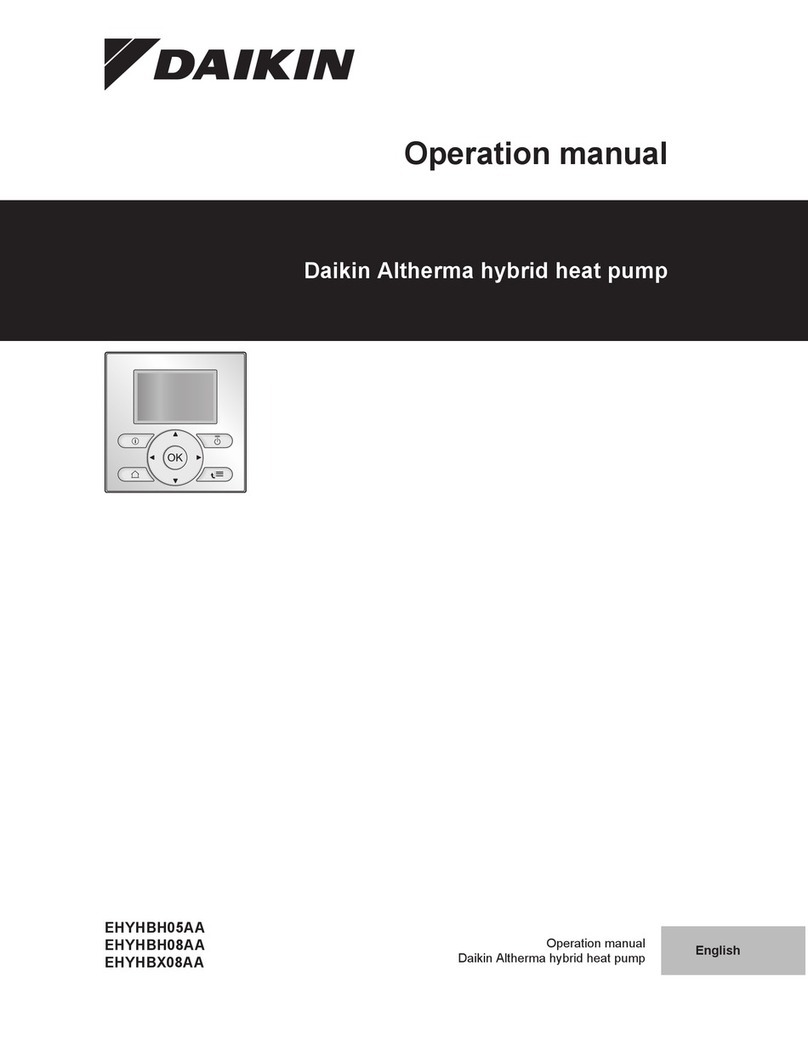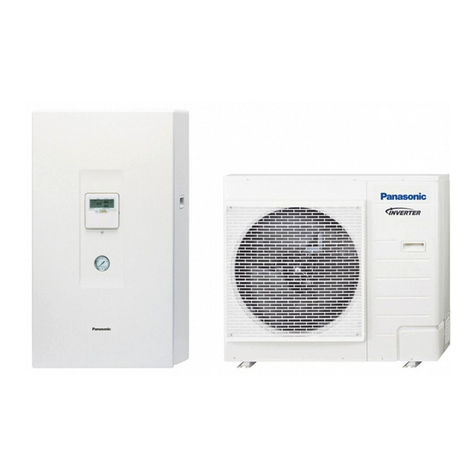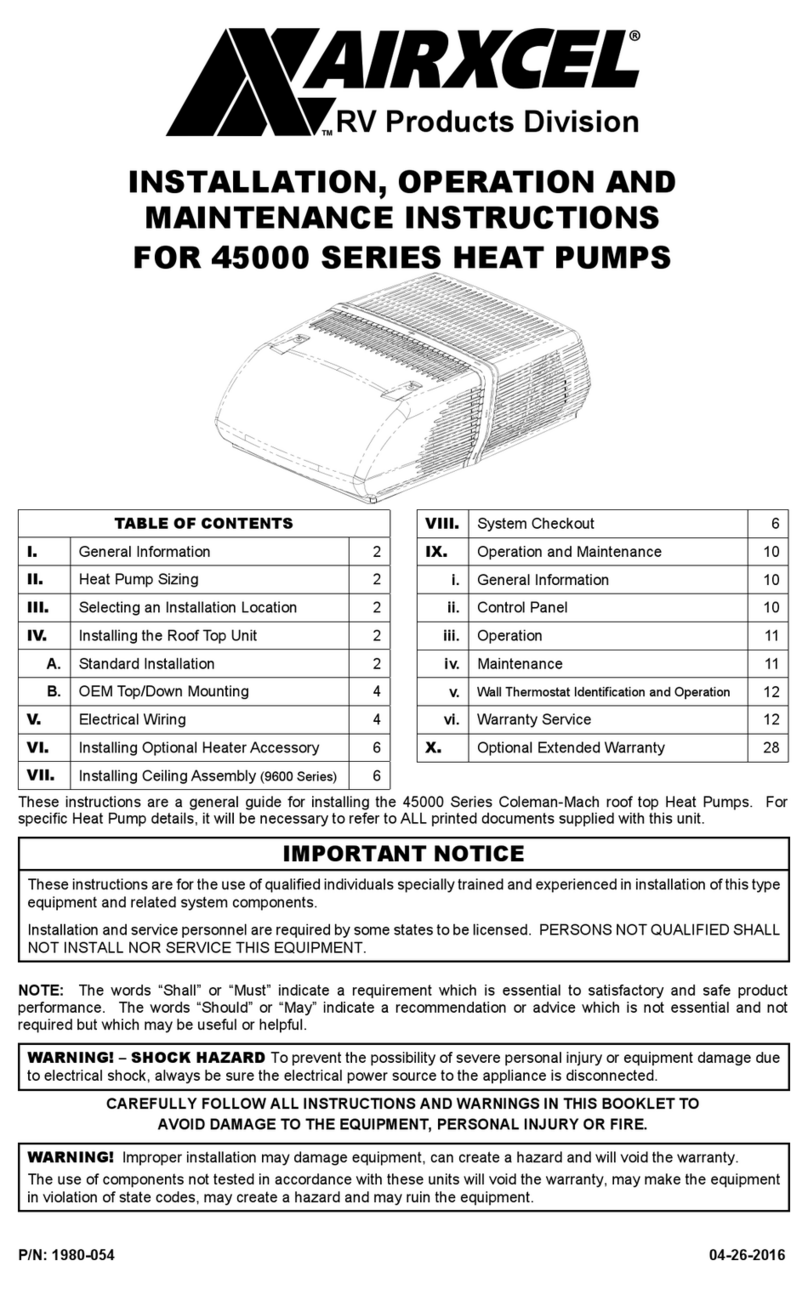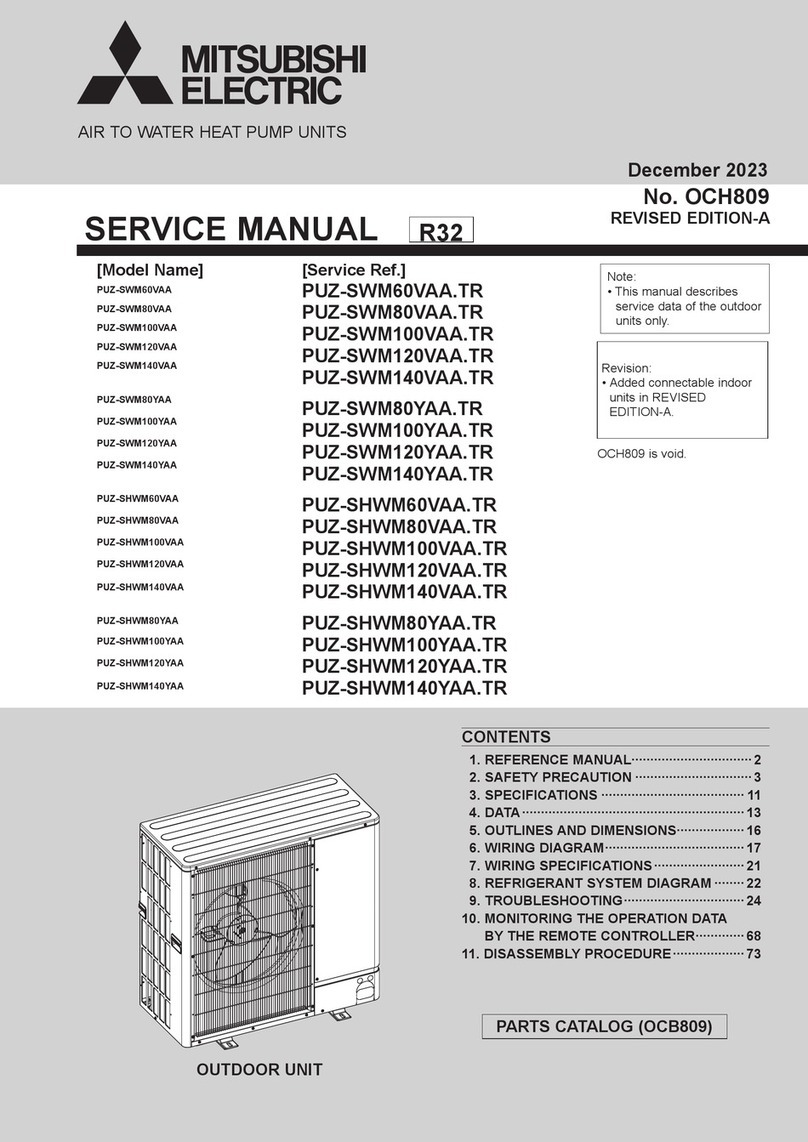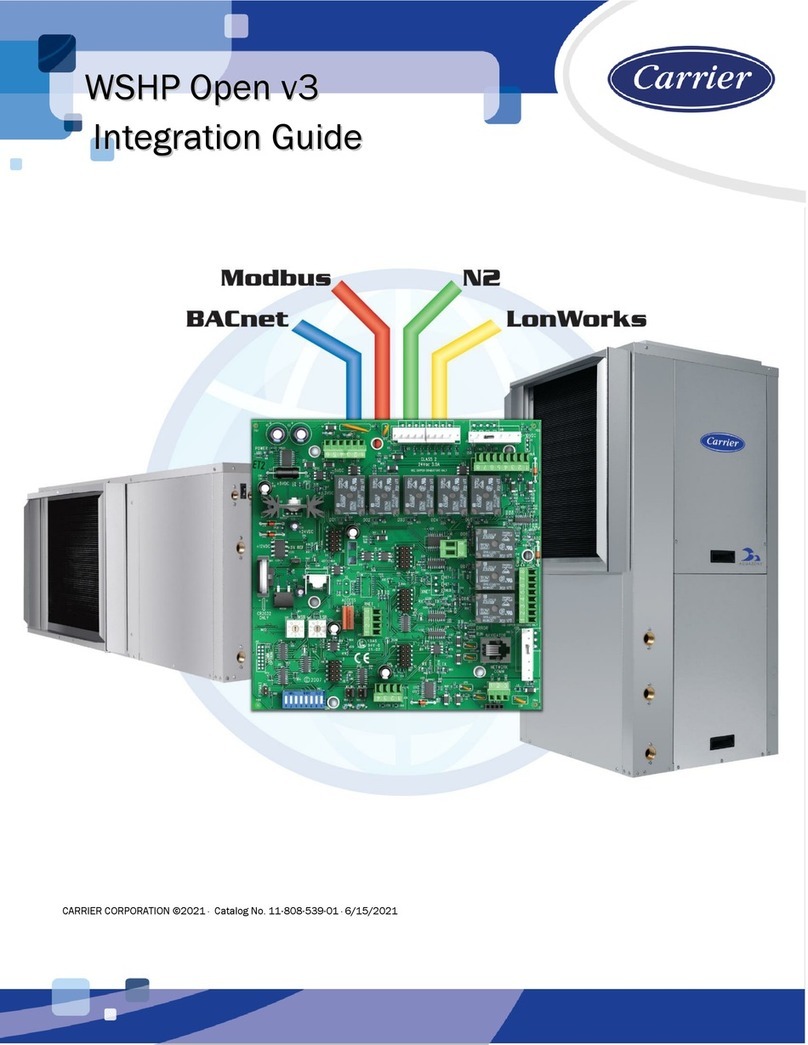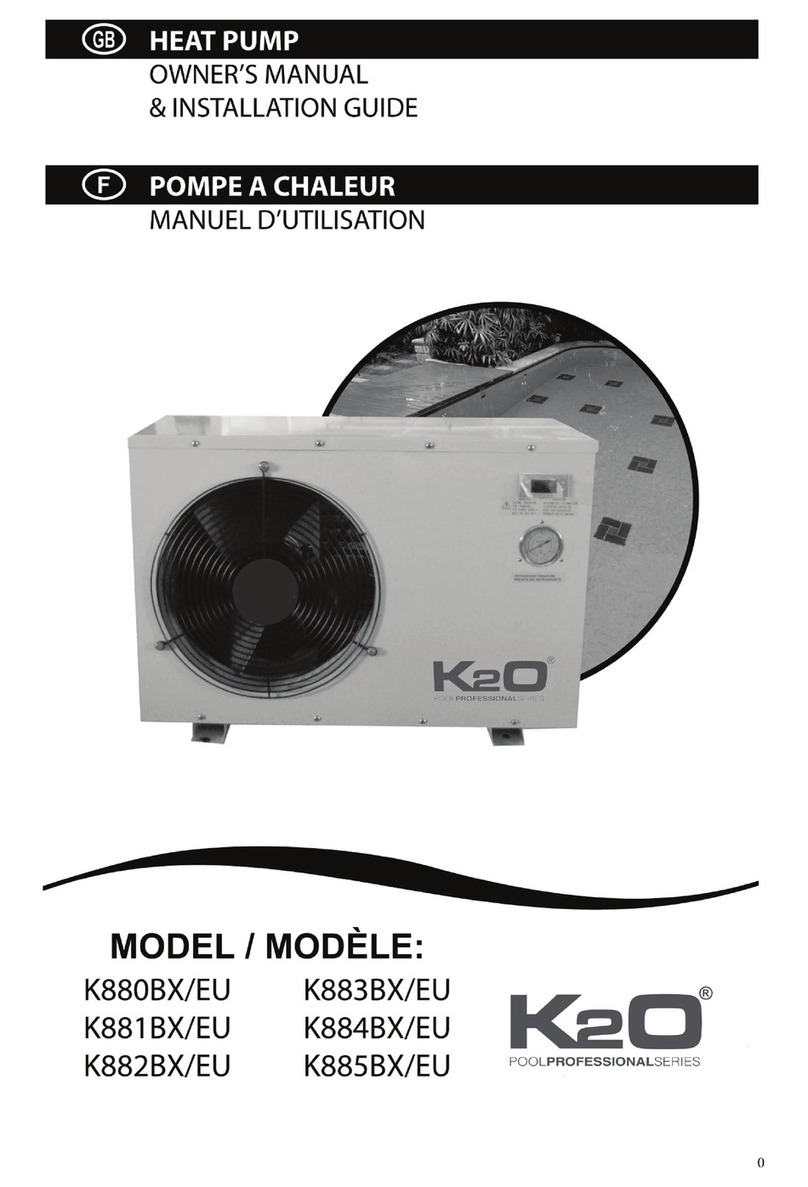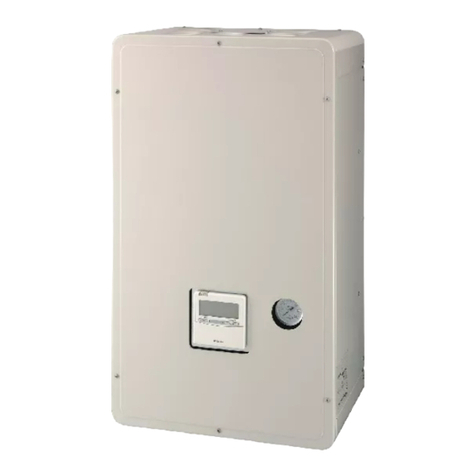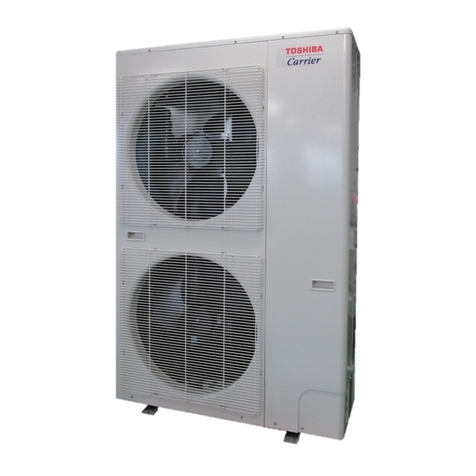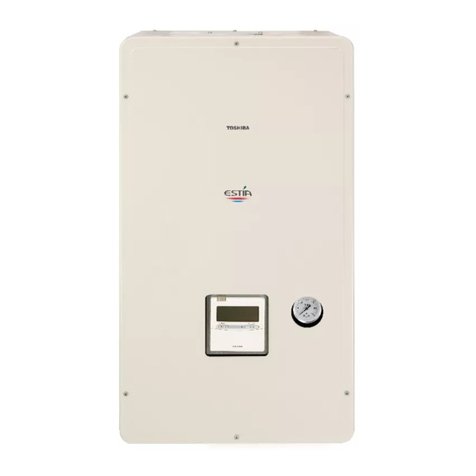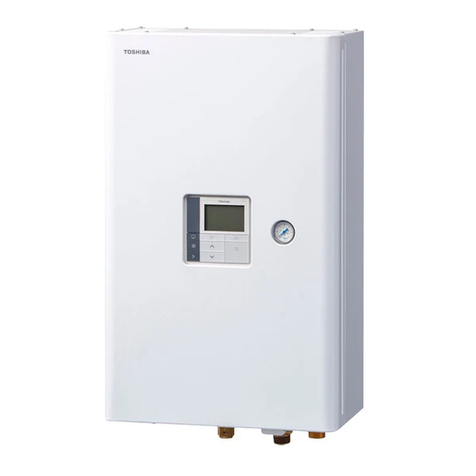
Outdoor Unit Installation Manual
– 7–
■Refrigerant Piping
R32 refrigerant
CAUTION
• Incomplete flaring may cause refrigerant gas leakage.
• Do not re-use flares. Use new flares to prevent
refrigerant gas leakage.
• Use flare nuts that are included with the unit. Using
different flare nuts may cause refrigerant gas leakage.
Usethefollowingitemfortherefrigerantpiping.
Material:Seamlessphosphorousdeoxidized
copperpipe.
Ø6.35,Ø9.52,Ø12.7Wallthickness0.8mmormore
Ø15.88Wallthickness1.0mmormore
REQUIREMENT
When the refrigerant pipe is long, provide support
brackets at intervals of 2.5 to 3 m to clamp the refrigerant
pipe. Otherwise, abnormal sound may be generated.
4Installation
conditions
■Before installation
Be sure to prepare to the following items before
installation.
Length of refrigerant pipe
Model
Length of
refrigerant pipe
connected to Hydro
/ Outdoor Unit
Item
HWT-40, 60 5 to 30 m
Addition of refrigerant
at the local site is
unnecessary for
refrigerant pipe length
up to 20 m. If the
refrigerant pipe length
exceeds 20 m, add
refrigerant in the amount
given in “Replenishing
refrigerant”
HWT-80, 110 5 to 30 m
Addition of refrigerant
at the local site is
unnecessary for
refrigerant pipe length
up to 8 m. If the
refrigerant pipe length
exceeds 8 m, add
refrigerant in the amount
given in “Replenishing
refrigerant”
HWT-140 5 to 25 m
Caution during addition of refrigerant. Charge the
refrigerant accurately. Overcharging may cause
serious trouble with the compressor.
• Do not connect a refrigerant pipe that is shorter than
5m.
This may cause a malfunction of the compressor or
other devices.
* Do not connect the refrigerant pipe longer than the
maximum length.
■Airtight test
1. Before starting an airtight test, further tighten the
spindle valves on the gas and liquid sides.
2. Pressurize the pipe with nitrogen gas charged from
the service port to the design pressure (4.15 MPa*)
to conduct an airtight test.
3. After the airtight test is completed, evacuate the
nitrogen gas.
* HWT-801/1101/1401H(8)(R)W-E: 4.6 MPa
Air purge
• To purge air, use a vacuum pump.
• Do not use refrigerant charged in the Outdoor Unit to
purge air. (The air purge refrigerant is not contained
in the Outdoor Unit.)
Electricalwiring
• Be sure to fix the power wires and Hydro / Outdoor
connecting wires with clamps so that they do not
come into contact with the cabinet, etc.
Earthing
WARNING
Makesurethatproperearthingisprovided.
Improper earthing may cause an electric shock. For
details on how to check earthing, contact the dealer who
installed the Air to Water Heat Pump or a professional
installation company.
• Proper earthing can prevent charging of electricity
on the Outdoor Unit surface due to the presence of a
high frequency in the frequency converter (inverter)
of the Outdoor Unit, as well as prevent electric
shock. If the Outdoor Unit is not properly earthed,
you may be exposed to an electric shock.
• Besuretoconnecttheearthwire.(Grounding
work)
Incomplete earthing can cause an electric shock. Do
not connect earth wires to gas pipes, water pipes,
lightning rods or earth wires for telephone wires.
Test run
Turn on the leakage breaker at least 12 hours before
starting a test run to protect the compressor during
startup.
■Installation location
WARNING
Install the Outdoor Unit properly in a location that is
durableenoughtosupporttheweightoftheOutdoor
Unit.
Insufficient durability may cause the Outdoor Unit to fall,
which may result in injury.
Pay special attention when installing the unit onto a wall
surface.
CAUTION
Do not install the Outdoor Unit in a location that
issubjecttocombustiblegasleaks.
Accumulation of combustible gas around the Outdoor
Unit may cause a fire.
Install the Outdoor Unit in a location that meets
thefollowingconditionsafterthecustomer’s
consentisobtained.
• A well-ventilated location free from obstacles near
the air inlets and air outlet.
• A location that is not exposed to rain or direct
sunlight.
• A location that does not increase the operating
noise or vibration of the Outdoor Unit.
• A location that does not produce any drainage
problems from discharged water.
• A degree of ventilation shall continue during the
period that the work is carried out.
• The ventilation should safely disperse any released
refrigerant and preferably expel it externally into the
atmosphere.
DonotinstalltheOutdoorUnitinthefollowing
locations.
• A location with a saline atmosphere (coastal area)
or one that is full of sulfide gas (hot-spring area).
• A location subject to oil, vapor, oily smoke, or
corrosive gases.
• A location in which organic solvent is used.
• Places where iron or other metal dust is present. If
iron or other metal dust adheres to or collects on
the interior of the Air to Water Heat Pump, it may
spontaneously combust and start a fire.
• A location where high-frequency equipment
(including inverter equipment, private power
generator, medical equipment, and communication
equipment) is used (Installation in such a location
may cause malfunction of the Air to Water Heat
Pump, abnormal control or problems due to noise
from such equipment).
• A location in which the discharged air of the
Outdoor Unit blows against the window of a
neighboring house.
• A location where the operating noise of the Outdoor
Unit is transmitted.
• When the Outdoor Unit is installed in an elevated
position, be sure to secure its feet.
• A location in which drain water poses any problems.
CAUTION
1. Install the Outdoor Unit in a location where the
discharge air is not blocked.
2. When an Outdoor Unit is installed in a location
that is always exposed to strong winds like a coast
or on the high stories of a building, secure normal
fan operation by using a duct or wind shield.
3. When installing the Outdoor Unit in a location that
is constantly exposed to strong winds such as on
the upper stairs or rooftop of a building, apply the
windproofing measures referred to in the following
examples.
1) Install the unit so that its discharge port faces the
wall of the building.
Keep a distance 500 mm or more between the
unit and wall surface.
2) Consider the wind direction during the operational
season of the Air to Water Heat Pump, and install
the unit so that the discharge port is set at a right
angle relative to the wind direction.
• When using an Air to Water Heat Pump under low
outside temperature conditions, prepare a duct or
snow hood so that it is not affected by the snow.
<Example>
500 mm
Wall
Strong wind
Strong wind
Snow hood
13-EN 14-EN
